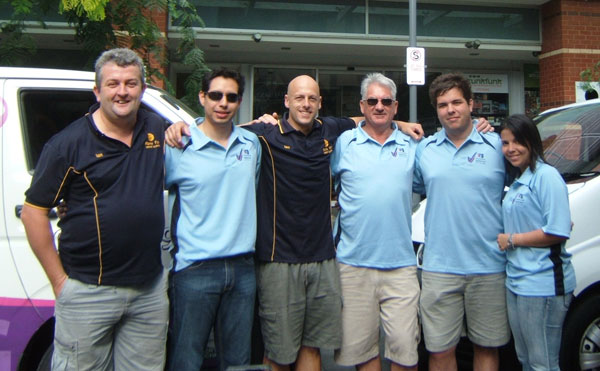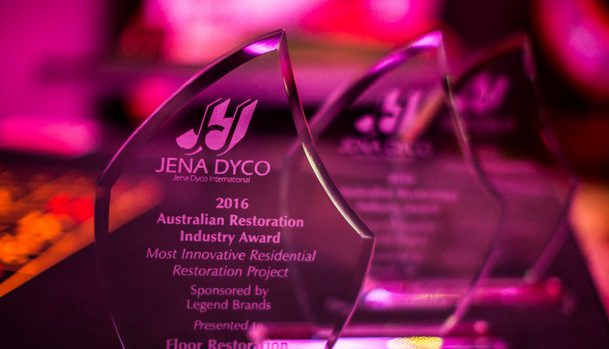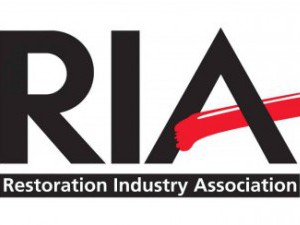

Recently awarded the RIA Lifetime Achievement Award in Australia, Duncan Bennett shares his observations on the local restoration industry.
A young curate was applying for a job as a vicar’s assistant. The local bishop, in an effort to get to know the young applicant, invited him to breakfast at his home. The bishop, realising that something was not right said, “I am afraid you have got a bad egg Mr Jones”, to which the curate replied, in a desperate attempt not to give offence to his future employer, “Oh, no, my Lord, I assure you that parts of it are excellent!”
I have to say the Australian restoration industry today is much like that curate’s egg, good in parts. Like the curate I will try to accentuate the positive although it is not possible to overlook a whiff of something not right. Let’s look at some of the current issues and their impact, both good and bad on the water damage restoration industry.
The shift to building contractors
In recent years there has been a concerted shift away from directing work to restoration oriented TPAs and assigning it to general building contractors. This is not of necessity a bad thing in itself. I have long maintained the restoration industry in this country will not command the respect it deserves until it is fully acknowledged as an essential skill set and drawn on by building contractors along with all of the other sub trades such as plumbers, electricians, carpenters and the like and paid appropriate remuneration.
From the perspective of a restoration trainer I now find a preponderance of builders taking restoration classes, in particular IICRC water restoration technician. This of course, is a good thing. Has this shift however resulted in an increased respect for the restorers skills? I fear not.
Builders still seem to be paying restoration technicians as unskilled or at best semi skilled workers on a pay scale not much different than floor sweepers and this is a travesty. This shift has also given rise to an anomalous situation between builders and restorers.
Some major insurers are assigning restoration work to both individual restoration companies and to building contractors. We now have the situation where panel restorers are paid at a much lower rate than panel builders for exactly the same operations. This is intolerable. I find it gut wrenching to put keen young restoration entrants through courses and know that they are not going to be suitably remunerated under the current system.
Required restoration skills training
Again I will use water damage restoration as an example. We have a considerable number of restoration contractors with limited or no training coming and telling us they have been told they need to become certified if they are to continue to receive work from builders. This is of course a good thing. There has long been a slew of unqualified persons doing restoration work.
To have pressure put on them to get some level of training is a step forward but it is a great concern of mine that the interest is almost entirely on getting a paper certification rather than in learning to do the job properly, monitoring adequately and understanding and working to industry standards. Much of the feedback I receive is many companies and technicians continue with the same flawed or incomplete processes even after training.
Unrealistic restrictions
There has been much discussion about the imposition of equipment caps, whether these be three day or four day caps. Given that jobs of any size will generally come under forward estimates, I have no real problem with equipment caps or anything else that encourages restorers to work effectively and efficiently. These are good things.
We remember the bad old days of gouging and over pricing where inefficiency was rewarded and the longer you could keep gear on the job, the more money you made. Those days are gone.
There are other restrictions however that are unrealistic and reveal a complete failure on the part of some carriers to understand basic principles of restoration.
We have the situation where a restorer is assigned to say dry out contents while a builder/restorer is assigned to dry out structure. How can one not understand that all elements in a wet environment contribute to the evaporative load? This makes a total mockery of the concept of water class as spelled out in the S500.
We also have a one size fits all pricing model being applied by some carriers and head contractors where a restorer is paid on a per square metre basis, regardless of the situation. Again, it becomes impossible to apply the S500 guidelines for class of water and also degree of contamination.
RIA involvement in the region
There have been representative members of RIA in the region since the mid-90s. In 2004 interest grew in RIA and the local membership grew to around 50 members. Unfortunately the structure of RIA at that time did not lend itself to serving the local needs and that number dwindled leaving only a few die yards to continue to carry their flag.
Happily that has changed in the last couple of years. Membership showing steady growth, RIA conferences being held in the region, establishment of an Australasian Council and most especially a considerable interest in advanced designations of CR WLS and CMP. This is all excellent progress.
At this time the importance and value of these advanced restoration credentials has not yet really impacted on our market here but we can only believe that with suitable promotion it will. One of the advantages the building industry has had in moving into the restoration space is it has more than one powerful lobbying organisations with access to our major clients at board level. It is hoped RIA can be a voice for restorers in the years to come helping to level out the playing field.
Where do we go from here?
Frankly I don’t know. There are numerous ways you and your business can go. Highly competent restorers are leaving the industry as being untenable. Some are re-skilling in industries where they can again feel pride.
Companies with excellent KPI’s and closure records are being forced out of business or to work for demeaning rates because they are not builders. Some are competing in what appears to be a race to the bottom as prices spiral downward. Perhaps this is a price we pay for having allowed vendor schedules of rates to dominate and dictate price.
Others are adjusting intelligently by being selective about who they work for and are not afraid to say no to unreasonable rates and restrictions. Some are acquiring special skills and equipment to establish a unique selling position.
A considerable number are going to the front end of the market and working directly for the one who has suffered the loss. It is indeed a good thing that we not accept like sheep what is pressed upon us. It is a good thing for restorers to drive change and grow their individual businesses through innovation. After all if you are in the restoration business then you are in the crisis management business. This is a crisis, manage it.
*Duncan Bennett is a founding director of Network Restorers and the managing director of restoration industry training company, CPK. He is an RIA WLS IICRC senior carpet inspector and an IICRC qualified instructor and is a master water restorer, master fire & smoke restorer and master textile cleaner.
This article was first appeared in C&R magazine and was re-published with permission in the September/October INCLEAN magazine. To subscribe click here.



